Listening to music or watching your favorite shows with headphones on can be an immersive and enjoyable experience. However, for some individuals, wearing headphones can result in discomfort in the ears. This discomfort can range from a mild irritation to more severe pain, making it difficult to continue using headphones for an extended period.
When faced with this dilemma, it's important to understand the underlying causes and explore possible solutions to alleviate the discomfort. Various factors can contribute to this discomfort, including the fit of the headphones, the material of the ear pads, and the duration of use. By identifying the root cause, individuals can take steps to prevent or minimize discomfort.
Ensuring a proper fit
One of the main culprits behind ear discomfort while using headphones is an ill-fitting pair. If the headphones are too tight or too loose, they can exert pressure on the ears or cause irritation. It's crucial to find a pair of headphones that fits comfortably and securely. Adjustable headbands, cushioned ear cups, and customizable sizing options are all factors to consider when selecting a pair of headphones.
Choosing the right materials
The material of the ear pads can significantly affect the comfort level of headphones. Some individuals may find that certain materials, such as synthetic leather or rubber, cause more irritation than others. Experimenting with different materials can help in pinpointing the ones that work best for your ears. Additionally, keep in mind that ear pads can wear out over time, so replacing them regularly can also provide relief from discomfort.
Understanding the Origins of Discomfort While Using Headphones
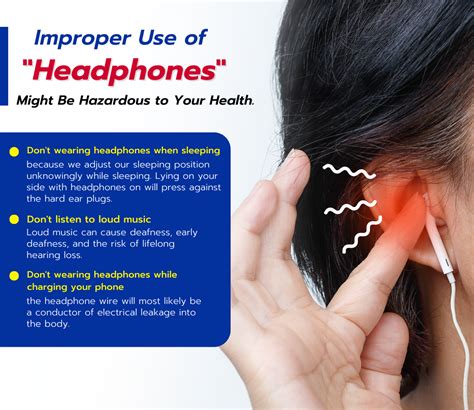
When we make use of audio devices to enhance our auditory experience, we occasionally encounter a sensation of uneasiness that can arise from extended headphone usage. It is vital to comprehend the underlying reasons behind this phenomenon in order to effectively mitigate any potential discomfort and promote a healthier auditory experience.
The Mechanism:
One possible mechanism contributing to the discomfort caused by headphones is the pressure exerted on the delicate structures within our ears. The close contact between the ear pads and the outer ear can lead to a compression of the auricle and the surrounding soft tissues, resulting in sensations of pressure and pain. Moreover, the prolonged application of force on the earlobes can give rise to discomfort and soreness.
Induced Friction:
Another factor that can contribute to ear discomfort is the friction induced by the constant rubbing of the headphone materials against the skin. This friction, when combined with the warmth generated by prolonged headphone use, can lead to skin irritation and subsequent discomfort.
Moisture Accumulation:
Additionally, the extended use of headphones can hinder the natural airflow within the ears, creating a localized environment of increased warmth and humidity. This combination of factors can promote moisture accumulation within the ear canal, ultimately leading to discomfort and potential ear infections.
Sensory Fatigue:
Lastly, our auditory system may undergo sensory fatigue when subjected to prolonged exposure to high volume levels. This fatigue can lead to feelings of discomfort and sensitivity, making the use of headphones unbearable for some individuals.
By understanding the various factors that contribute to ear discomfort while using headphones, it becomes possible to identify strategies and implement preventive measures to alleviate such discomfort. Remember that attentive ear care and regular breaks during headphone usage are essential to maintain a comfortable auditory experience.
Understanding the Various Types of Discomfort Experienced as a Result of Wearing Headphones
When using headphones, many individuals may encounter various forms of discomfort that can affect their ears. It is important to understand the different types of discomfort and the potential causes behind them in order to effectively address and mitigate any potential issues.
One common type of discomfort experienced is ear pain or soreness, which can range from mild discomfort to severe pain. Another form of discomfort is ear pressure or a feeling of fullness in the ears. Additionally, some individuals may experience itching or irritation in the ears, leading to discomfort. It is crucial to recognize and differentiate these various forms of discomfort to implement appropriate remedies.
The causes of these discomforts can vary, ranging from improper fit of the headphones to prolonged use at high volumes. Inadequate padding or ear cups that are too small can result in pressure points and pain. Continuous exposure to loud sounds can cause ear fatigue, leading to soreness and discomfort. Furthermore, poor hygiene, such as infrequent cleaning of headphones or sharing them with others, may contribute to itching and irritation.
Understanding the different types of discomfort caused by wearing headphones allows for a more targeted approach in finding solutions. For example, selecting headphones with adjustable headbands and cushioned ear cups can alleviate pressure points and soreness. Taking regular breaks and reducing the volume can help prevent ear fatigue. Proper cleaning and maintenance of headphones can also reduce itching and irritation.
Overall, by recognizing and addressing the various types of discomfort caused by headphones, individuals can ensure a more comfortable listening experience while reducing the risk of any potential long-term ear damage.
Signs That Your Earphones Are Causing Discomfort
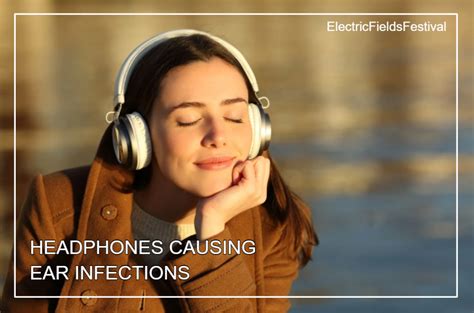
When using headphones, there are certain indicators that can help you identify if they are causing discomfort to your ears. By paying attention to these signs, you can take necessary steps to alleviate any discomfort and prevent further damage to your ears.
- Physical discomfort: If you experience any discomfort or pain in or around your ears while using earphones, it could be a sign that they are not fitting properly or are exerting too much pressure on your ears. This can lead to soreness, inflammation, or even ear infections.
- Hearing issues: If you notice any changes in your hearing, such as muffled or distorted sounds, it may be a result of improper headphone usage. Earphones that are too loud or ill-fitting can damage your eardrums and affect your overall hearing ability.
- Ear fatigue: If you frequently use headphones for extended periods of time and find yourself experiencing fatigue or a sensation of fullness in your ears, it could be a sign of discomfort. This may indicate excessive sound exposure or pressure on your ear canal, leading to discomfort and tiredness.
- Ear itching or irritation: Constant use of headphones that are too tight or made from low-quality materials can cause your ears to itch or become irritated. The friction between the headphones and your skin can lead to redness, dryness, or even allergic reactions.
- Tinnitus or ringing in the ears: If you consistently hear a ringing, buzzing, or hissing sound in your ears, it may be a symptom of tinnitus, which can be exacerbated by using headphones at high volumes. This condition can be a result of damage to the delicate structures of the inner ear.
Recognizing these signs is crucial for maintaining the health of your ears and preventing long-term complications. If you experience any of these symptoms, it is important to adjust your headphone usage, check the fit and quality of your earphones, and seek professional help if needed.
Choosing Headphones for Optimal Ear Comfort
When it comes to selecting the perfect headphones to enhance your listening experience, it is essential to consider not only the audio quality and design but also their impact on ear comfort. The right choice of headphones can mitigate any potential discomfort and ensure a pleasant and enjoyable listening session.
Consider the Fit: One of the key factors that contribute to ear discomfort is ill-fitting headphones. It is crucial to choose headphones that provide a secure but not too tight fit. Over-ear headphones with adjustable headbands or in-ear headphones with multiple-sized ear tips are excellent options to customize the fit to your liking.
Opt for Cushioned Earpads or Ear Tips: Headphones equipped with cushioned earpads or ear tips help minimize pressure and friction on the ears. Look for headphones with soft and breathable materials, such as memory foam or silicone, which provide comfort during extended listening sessions.
Choose Open-Back or Semi-Open Headphones: Closed-back headphones tend to produce more pressure on the ears due to restricted airflow. Open-back or semi-open headphones, on the other hand, allow for better ventilation, reducing the likelihood of heat buildup and discomfort. These types of headphones can be particularly suitable for those prone to sweating or experiencing discomfort during extended wear.
Pay Attention to Adjustable Features: Headphones with adjustable features like swiveling ear cups or a flexible headband can provide a personalized fit that accommodates different head shapes and sizes. These features ensure the headphones adapt to your specific comfort needs, reducing any potential discomfort.
Avoid High Sound Pressure Levels: Exposing your ears to excessively loud volumes can result in discomfort and even potential hearing damage. When choosing headphones, consider those with sound-limiting features or opt for models that offer a good balance between volume and audio quality.
Test Before Purchasing: Lastly, it is highly recommended to test the comfort of headphones before making a purchase, especially if you experience recurring ear discomfort. Visit a store or borrow headphones from a friend to try them out for a reasonable period and see how they feel on your ears.
By carefully considering the fit, cushioning, type, adjustability, sound levels, and testing options, you can select headphones that prioritize ear comfort and enhance your overall listening experience.
Tips for Properly Wearing Headphones to Prevent Discomfort in the Ears
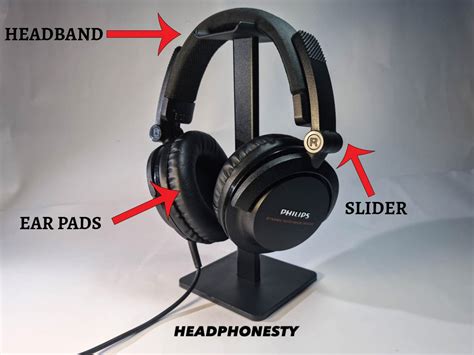
When using audio devices, the way we wear our headphones can significantly impact our comfort and overall listening experience. In this section, we will provide valuable tips and techniques to wear headphones correctly, ensuring optimal comfort and minimizing any potential discomfort to our ears.
- Fit: The first step in avoiding ear discomfort is to ensure that the headphones fit properly. It is crucial to find a pair that fits snugly but not too tightly, as an ill-fitting pair can cause discomfort and even pain over time.
- Ear Positioning: Properly positioning the headphones on the ears is essential for a comfortable listening experience. Placing the headphones over the outer part of the ear rather than pushing them too far inside can help prevent discomfort.
- Adjust the Headband: Many headphones come with an adjustable headband to accommodate different head sizes. It is important to adjust the headband to fit comfortably on the head, as a tight or loose headband can contribute to ear discomfort.
- Take Breaks: Prolonged use of headphones can put strain on the ears and cause discomfort. It is advisable to take regular breaks during extended listening sessions to give your ears some rest and prevent discomfort.
- Volume Control: Listening to music or audio at excessively high volumes can not only damage the ears but also lead to discomfort. It is recommended to set the volume at a moderate level and avoid maximum volume settings to protect your ears.
- Cleanliness: Keeping your headphones clean is essential for maintaining ear comfort. Regularly cleaning the ear pads and other parts of the headphones can prevent the accumulation of dirt, sweat, and bacteria, which can cause discomfort and skin irritation.
- Use Noise-Canceling Headphones: Noise-canceling headphones can be a great option for reducing the need to increase the volume excessively. By blocking out external noise, these headphones allow for a more comfortable listening experience at lower volume levels.
By following these tips and wearing headphones properly, you can enjoy your favorite music or audio content without the discomfort that can arise from improper usage. Remember, the key is finding the right fit and taking care of your headphones to ensure a comfortable and enjoyable listening experience.
Common Mistakes That Exacerbate Ear Displeasure When Utilizing Audio Devices
Within the realm of audio equipment, there exist certain errors that can intensify the discomfort experienced in one's ears. These oversights, often unwittingly committed by users, can amplify the negative effects and contribute to further irritation and unease. By understanding these common missteps, individuals can take proactive measures to mitigate any potential discomfort and preserve the health of their auditory faculties.
1. Improper Fit: A fundamental mistake that exacerbates ear discomfort is the improper fitting of audio devices. When headphones are not suitably adjusted to conform to the unique contours of the individual's ears, pressure points can develop, leading to pain and soreness. Ensuring a snug fit that provides adequate support while still allowing for comfort is essential for minimizing any potential discomfort.
2. Extended Usage: Another common error that intensifies ear displeasure is the prolonged use of headphones. Extended exposure to audio devices can place undue strain on the delicate structures of the inner ear, causing discomfort and potentially leading to more severe problems such as ear pain or temporary hearing loss. It is crucial to take regular breaks and limit the duration of headphone usage to allow the ears to rest and recover.
3. High Volume Levels: Exposing the ears to excessively high volume levels is a significant contributor to ear discomfort. Listening to music or other audio content at high volumes for extended periods can damage the sensitive auditory mechanisms and lead to discomfort, tinnitus, or even permanent hearing loss. It is advisable to keep the volume at a moderate level and use volume-limiting features when available to prevent any unnecessary strain on the ears.
4. Poor Sound Quality: Utilizing headphones with subpar sound quality can also contribute to ear discomfort. Low-quality audio devices often lack proper frequency response, resulting in distorted sound that requires higher volumes to compensate. This overcompensation strains the ears and may lead to discomfort. Investing in headphones with clear and accurate sound reproduction can greatly reduce the likelihood of any sensation of ear discomfort.
5. Overcleaning or Insufficient Cleaning: Improper cleaning methods can aggravate ear discomfort when using headphones. Overcleaning can remove the natural oils that lubricate the ear canal, leading to dryness and irritation, while insufficient cleaning can allow the buildup of debris and wax, causing discomfort and potential ear infections. Following recommended cleaning practices, such as using a gentle cloth or specialized cleaning solutions, can help maintain a clean and comfortable aural environment.
Conclusion: By avoiding these common mistakes and taking proactive measures to promote ear health, individuals can enjoy the benefits of using headphones while minimizing any potential discomfort. Adhering to guidelines for proper fit, taking breaks, moderating volume levels, investing in quality audio devices, and adopting suitable cleaning practices can all contribute to a more pleasant listening experience and preserve the well-being of one's ears.
Simple Ways to Relieve Ear Sensations Caused by Listening Devices
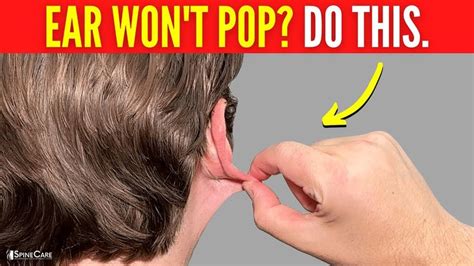
In our fast-paced modern world, many individuals enjoy the convenience and pleasure of using personal audio devices to enhance their daily routine. However, this tech-savvy lifestyle can sometimes lead to uncomfortable sensations in our ears. Fortunately, there are several natural home remedies that can help alleviate these discomforts caused by frequent use of listening devices.
1. Gentle Massage
One effective approach to reduce ear discomfort is through gentle massage techniques. By softly massaging the area around the ears, you can promote better blood circulation, potentially relieving any pressure or irritation caused by frequent headphone use.
For gentle massage:
- Start by placing your fingertips on the temples and gently move them in circular motions.
- Next, move to the area behind the ears and gently massage using upward strokes.
- Continue massaging the lower jawline and neck area, as tension in these areas can contribute to ear discomfort.
Remember to always be gentle and avoid applying excessive pressure to the sensitive areas.
2. Warm Compresses
An easy and soothing home remedy for ear discomfort is the application of warm compresses. Warmth can help improve blood flow and relax the muscles surrounding the ears, providing relief from any discomfort caused by headphones or other listening devices.
To use warm compresses:
- Dip a clean cloth in warm water and wring out the excess moisture.
- Place the warm cloth gently over the affected ear and hold it for 5-10 minutes.
- Repeat as needed, ensuring the temperature is comfortable and not too hot.
3. Tea Tree Oil Drops
Tea tree oil is known for its antiseptic and anti-inflammatory properties, making it a beneficial remedy for ear discomfort caused by headphones. By using tea tree oil drops, you can help reduce any potential irritation and promote a soothing sensation in the affected ear.
To use tea tree oil drops:
- Mix 2-3 drops of tea tree oil with a carrier oil, such as olive oil or coconut oil.
- Using a clean dropper, carefully place a few drops of the oil mixture into the affected ear.
- Allow the oil to sit for a few minutes before gently tilting the head to drain any excess.
Remember to consult with a healthcare professional before using any essential oils, especially if you have any underlying conditions or allergies.
By incorporating these simple and natural home remedies into your routine, you can find relief from ear discomfort caused by headphones or other listening devices. Prioritizing ear health and taking regular breaks from extended listening sessions can also contribute to long-term comfort and well-being.
When to Seek Medical Assistance for Ear Discomfort Associated with Headphone Use
If you find yourself experiencing discomfort in your ears while using headphones, it is important to be aware of the signs that may indicate a need for medical help. While occasional discomfort can be common and resolved with simple self-care techniques, there are situations where seeking professional assistance is advised.
- Persistent or worsening discomfort: If the ear discomfort caused by headphone use persists or worsens despite taking breaks and adjusting the volume, it might be necessary to consult a medical professional.
- Pain or sharp sensations: If you experience sharp pain or intense sensations of discomfort in your ears when using headphones, it is crucial to seek medical help. This could signify an underlying condition that needs to be evaluated by a healthcare provider.
- Hearing difficulties: If your headphone use is accompanied by a noticeable deterioration in your hearing abilities, such as muffled sounds or difficulty understanding conversation, it is important to schedule an appointment with an audiologist or an ear, nose, and throat specialist.
- Consistent headaches or dizziness: If you frequently experience headaches or dizziness during or after using headphones, it is advisable to seek medical assistance. These symptoms might be indicative of an issue with the inner ear or other related structures.
- Accompanying ear infections or drainage: If you develop ear infections or notice any abnormal drainage from your ears following headphone use, it is essential to consult a healthcare professional for a thorough examination and appropriate treatment.
Remember, while minor discomfort can often be alleviated through proper headphone adjustment and regular breaks, it is vital to prioritize your ear health and seek medical help when necessary. A qualified medical expert will be able to assess and diagnose any potential underlying conditions, provide suitable treatment, and offer advice on how to prevent future discomfort.
Preventive Measures to Alleviate Discomfort in Ears Caused by Headphones
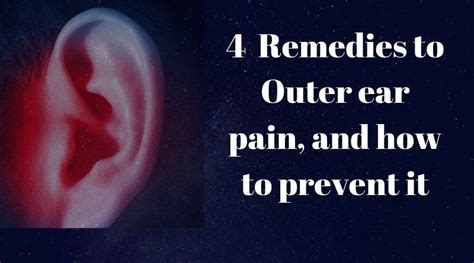
When it comes to enjoying our favorite music or immersing ourselves in the richness of a movie soundtrack, headphones play a pivotal role in enhancing our auditory experience. However, improper usage of headphones can lead to ear discomfort, which can range from mild irritation to more severe symptoms. It is essential to adopt preventive measures to minimize the risk of ear discomfort and maintain our auditory health.
1. Opt for an Appropriate Fit: Ensuring that your headphones fit properly is crucial in preventing ear discomfort. Consider choosing headphones with adjustable sizing options or different ear tips, allowing you to find a snug fit that suits your individual preferences. This will help to prevent excessive pressure on your ear canals and reduce the chances of discomfort.
2. Take Breaks: Prolonged usage of headphones can exert pressure on your ears and contribute to discomfort. To prevent this, make it a habit to take periodic breaks from wearing headphones. Give your ears some time to rest and recover, allowing them to relieve any built-up pressure and reduce the risk of discomfort or irritation.
3. Maintain Cleanliness: Keeping your headphones clean is essential for preventing ear discomfort. Regularly remove any accumulated dirt, earwax, or debris from the ear cups or ear tips of your headphones. This will ensure that your ears are not exposed to potential irritants, reducing the likelihood of discomfort or infections.
4. Adjust Volume Levels: Listening to music or other audio at excessively high volumes can not only damage your hearing but also contribute to discomfort. To prevent this, adjust the volume levels of your headphones to a comfortable and safe level. Be mindful of any warning signs such as ringing in the ears or muffled sounds, indicating that the volume is too loud.
5. Limit Background Noise: When using headphones in noisy environments, it is common for individuals to increase the volume to compensate for the external sounds. However, this can lead to discomfort. Consider using noise-canceling headphones that can help block out external noises, allowing you to enjoy your audio content without the need for higher volume levels.
6. Hydrate Your Ears: Dry ears can be more susceptible to discomfort when using headphones. To keep your ears moisturized, consider using ear drops recommended by a healthcare professional. These ear drops can help prevent dryness or irritation, ensuring a more comfortable listening experience.
By implementing these preventive measures, you can significantly reduce the risk of ear discomfort caused by headphones. Prioritizing the health and well-being of your ears will help you enjoy your audio content without any unnecessary discomfort or potential long-term consequences.
Exploring Alternative Listening Options for Individuals Experiencing Discomfort Resulting from Headphone Usage
Within this segment, we will delve into various alternate methods of audio consumption for those individuals who encounter uneasiness or physical discomfort as a consequence of wearing headphones. We will explore innovative solutions that can be employed as suitable alternatives in order to minimize potential ear issues and provide an optimal listening experience.
1. Speaker Systems:
For those experiencing discomfort while wearing headphones, utilizing speaker systems can serve as a useful alternative. Speaker systems enable individuals to enjoy their preferred audio content without the need for headphones. By positioning the speakers at an appropriate distance and adjusting the volume accordingly, this alternative can provide a more comfortable and immersive listening experience.
2. Wireless Earbuds:
If traditional headphones cause discomfort, wireless earbuds present a viable alternative. These compact devices offer a wireless audio solution without compromising sound quality. With their lightweight design and customizable fit, wireless earbuds grant users the freedom to enjoy their audio content while minimizing the pressure often experienced with conventional headphones.
3. Bone Conduction Headphones:
Another alternative for individuals experiencing ear discomfort is the utilization of bone conduction headphones. These innovative devices transmit sound vibrations through the bones of the skull, bypassing the ear canal entirely. As a result, individuals can enjoy audio content without applying any pressure to the ears, potentially reducing discomfort significantly.
4. Loudspeaker Apps:
Loudspeaker apps are smartphone applications that transform the device's speakers into external sound sources. These apps allow users to play audio content at a comfortable volume without the need for headphones. By placing the phone at a suitable distance, users can create a makeshift loudspeaker system, once again minimizing the discomfort caused by headphone usage.
5. Ear Canal Covers:
In situations where avoiding the use of headphones is not feasible, ear canal covers can be a viable option. These covers serve as a cushioning layer between the headphones and the ear canal, reducing direct contact and potential discomfort. Ear canal covers are available in various materials and thicknesses, allowing for a personalized and more comfortable audio experience.
In conclusion, there are several alternative listening options available for individuals who experience ear discomfort from headphone usage. By exploring these alternatives, individuals can find a suitable solution that minimizes discomfort and allows for an enjoyable audio experience.
[MOVIES] [/MOVIES] [/MOVIES_ENABLED]FAQ
What are common causes of ear discomfort caused by headphones?
Common causes of ear discomfort caused by headphones include wearing headphones that are too tight, wearing them for extended periods of time, using headphones with large ear cups that put pressure on the ears, and listening to music or sound at high volumes.
How can I prevent ear discomfort while using headphones?
To prevent ear discomfort while using headphones, you can try the following: make sure your headphones fit properly and are not too tight, take regular breaks from wearing headphones, use headphones with smaller ear cups or adjustable headbands, keep the volume at a moderate level, and clean your headphones regularly to avoid ear infections.
What are some home remedies for relieving ear discomfort caused by headphones?
Some home remedies for relieving ear discomfort caused by headphones include applying a warm compress to the ears, gently massaging the ears and neck to improve blood circulation, using over-the-counter pain relief medication, and practicing relaxation techniques to reduce stress and tension in the body.




